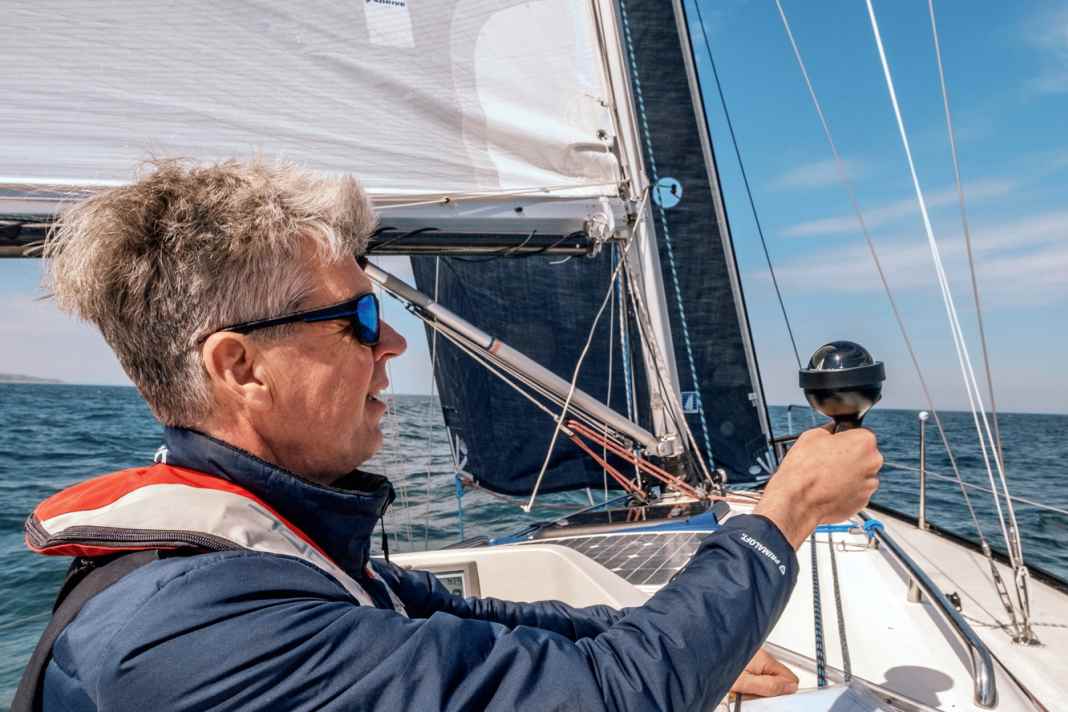





- Differences: Hand bearing compass vs. steering compass
- Reading the bearing compasses
- Test measurements: What matters in practice
- Put to the test: pocket-sized bearing compasses
- Common features of the bearing compasses
- What sometimes makes reading the bearing compasses difficult
- The bearing compasses in detail
- Our conclusion
Sounding compasses have been used as navigation instruments on seagoing vessels for centuries. In coastal navigation, they make it possible to determine a reliable position by taking bearings from landmarks and sea marks with a secure position. Even in the age of satellite navigation using GPS & Co., a bearing compass on board can still pay off - for example, for checking the technology, in the event of its failure or if the satellite signals are disrupted.
Bearing compasses also prove to be useful when steering by sight, when it is necessary to clearly identify the heading mark. A comparison of the bearing of the object with its position on the nautical chart to the ship's current location provides certainty.
Another area of application is collision prevention. After all, according to Rule 7 of the International Collision Prevention Regulations (COLREGs), it is important to constantly check whether there is a possibility of a collision. Rule 7 d) states: "Such a possibility shall be assumed if the compass bearing of an approaching vessel does not change appreciably." Regularly checking the compass bearing of other vessels is therefore an important basis for traffic assessment.
Differences: Hand bearing compass vs. steering compass
This is due to the mounting situation. While a hand bearing compass can easily be aligned with any object in sight, a steering compass requires the bearing object to be in the line of sight of the compass card. However, superstructures and compass housings often obstruct the view. The whole thing is even more difficult with bulkhead compasses.
An exact bearing also requires a sufficiently fine graduation and a usable bearing or sighting device. These are often in short supply on standard steering compasses. Conversely, not every bearing compass is equally suitable as a steering compass. A basic distinction must be made between spherical and flat compasses. In spherical compasses, the fully gimballed compass card swings freely in an acrylic glass sphere filled with damping fluid. The compasses tested Plastimo Iris 100 and Silva 70 UNE fall into this category.
Reading the bearing compasses
They can be read in different positions - whether held vertically by the handle or lying horizontally. Both products are supplied with a bracket with which they can also be permanently mounted on board. They can then also be used as a steering compass.
In the other bearing compasses tested, the compass card is housed in a flat acrylic glass casing. Although it also floats in a damping fluid, the design only allows very limited compensation for tilt. Accordingly, the compass should be kept as level as possible.
While the scales of the spherical compasses tested only have markings in 5-degree increments, some of their flat relatives such as the Plastimo Iris 50 and the two models from Vion provide a reading accurate to the degree. The small Ritchie X-11Y is again provided with 5-degree markings, while the scale of the Riviera Mizar BM with 10-degree increments is the coarsest. Clearly separated 5 and 10 degree markings are very helpful.
Test measurements: What matters in practice
In practice, the quality of the damping also plays an important role. It helps to ensure that the compass card does not swing frantically back and forth during movement. Compasses that are dampened properly in practice quickly stabilise to a clear result. This works well with the high-quality test candidates, but only moderately with the cheaper products.
Meanwhile, our test measurements were carried out with solid ground underfoot. Nevertheless, a similar picture emerged here too: as representatives of the upper price range, the products from Silva and Vion showed the smallest spread in the measured values. The Plastimo Iris 50, which is in the middle of the price range, also delivered good results.
However, the finest scale and the best damping are of little use if the bearing object cannot be precisely aimed at. The spherical compasses in the test rely on a bearing marker attached to the compass suspension that swings with the compass. Although this bearing line allows the bearing object to be aimed at easily, the arm must be stretched out to read the compass. This harbours the risk of parallax errors and results in an unstable posture.
Put to the test: pocket-sized bearing compasses
The pocket-sized compasses take different approaches to aiming. The simplest solution is the Richie X-11Y, which has a simple notch on the top of the compass dome for sighting. There is also a small reading mark on the protective housing. Unfortunately, the two are not aligned, but one above the other, which makes it difficult to read. In addition, the compass is only loosely inserted in its rubber casing, so that the notch on the top can slip opposite the reading mark. As you also have to hold this compass freely in your hand to read it, taking bearings becomes a wobbly affair. Especially as it also takes quite a long time to stabilise.
The situation is similar with the cheapest compass in the test, the Riviera Mizar. It also has a notch on the protective housing and a reading mark in front of the degree scale, although these are closer together. This compass also sits a little more firmly in its protective housing. Like the Ritchie product, however, you have to hold it freely in your hand to read it. At the same time, the compass must be held absolutely horizontally, otherwise the degree scale will be covered by the edge of the housing. This exercise is like a game of patience.
In terms of readability and accuracy, both products therefore bring up the rear in the test field.
The Plastimo Iris 50 and Vion AX 2000 (also available as Vion Paris Mini 2000) and Vion Axium 3 compasses can be held directly in front of the eye, which provides a much more stable working position. Especially as you can use both hands and support the compass at the root of the nose. This type of bearing device enables very precise and fast measurements, especially as no bearing marks need to be aligned.
The Iris 50 also has a bearing line that lies exactly above the degree scale. This provides a clear measurement result even under difficult conditions. With its very good readability, this compass was convincing overall.
The two Vion models also offer excellent readability, which is helped by the well-designed degree scale, which provides an approximate orientation at first glance. In a direct comparison, the AX 2000 is slightly ahead in the test field with its particularly clear display and the best attenuation.
Common features of the bearing compasses
In principle, all the flat compasses tested can also be read from above so that they can also be used as a steering reference if necessary. On the Plastimo Iris 50 and the Vion models, the compass rose has been provided with a second, larger degree scale for this purpose, which remains invisible in the prism. The Plastimo compass also has a directional arrow on the compass glass. On the Vion products, the compass glass above the relevant degree value is designed as a magnifying glass to make it easier to read from above.
However, the pocket compasses are too small for regular use as a steering compass. In addition, the tilt compensation is far too limited. On the other hand, you can hang them directly in front of your chest.
Another aspect is the night-time suitability of the bearing compasses. Manufacturers choose different solutions from noctilucent roses to electric lighting or retractable glow sticks.
There are other criteria too: We threw all the test candidates into the water to check the tightness and buoyancy of the housings. With the exception of the spherical compasses, all models sank more or less quickly - at the latest when the water penetrated the protective housing. The Vion models at least have an additional buoyancy aid in the form of a neoprene neck pad. The compass housings themselves proved to be leak-proof in our test.
What sometimes makes reading the bearing compasses difficult
Spherical compasses are held with the arm more or less outstretched. This leads to a relatively unstable position and harbours the risk of parallax errors. But flat compasses can also be tricky in detail: On the Ritchie X-11Y, the compass only sits loosely in its protective housing, so that the bearing and reading marks can slip against each other. The marks are quite far apart, which makes reading difficult. This means that intermediate values can only be roughly estimated.
The bearing compasses in detail
PLASTIMO IRIS 50
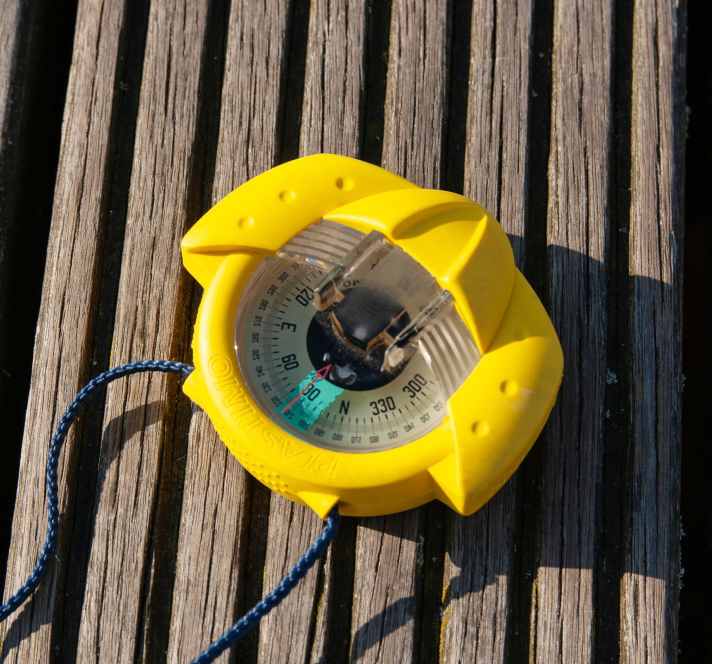
Properties
Compact dimensions
Ergonomic housing, even in wet conditions
Very precise alignment possible
Very easy to read
Good damping
Useful lighting
Prism not fully protected
- Manufacturer: www.plastimo.com
PLASTIMO IRIS 100
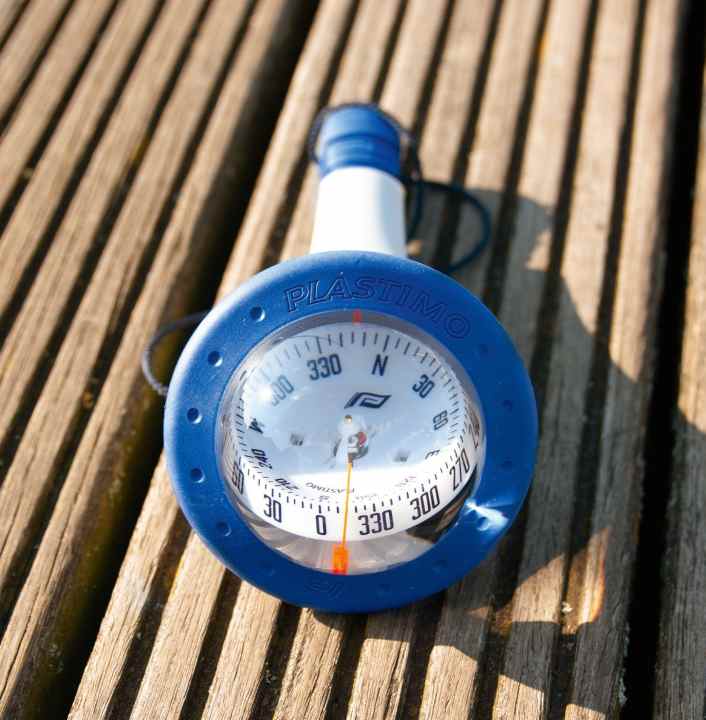
Properties
Can also be used as a steering compass
Lighting with commercially available battery
Sufficient attenuation
Ergonomic handle
Takes quite a long time to stabilise
Insufficiently spaced degree steps
Moderate bearing accuracy
- Manufacturer: www.plastimo.com
RITCHIE X-11Y
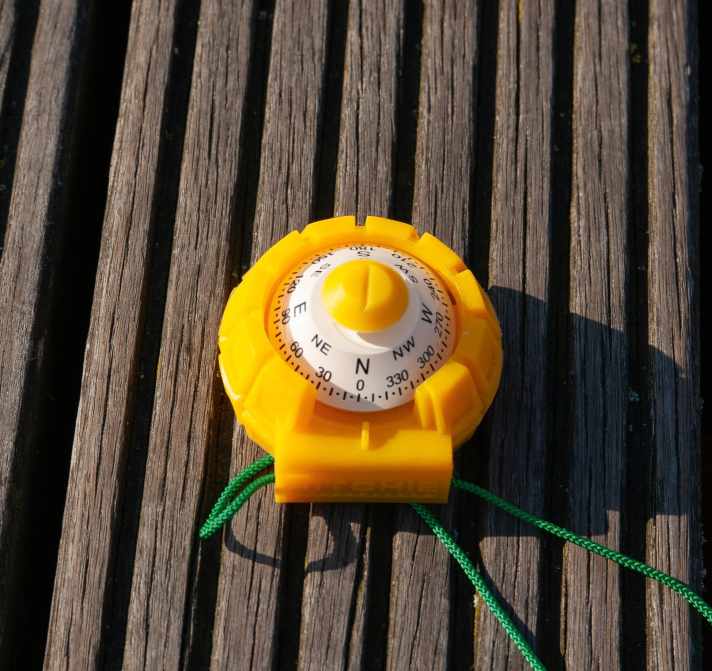
Properties
Very compact
Reasonably priced
Bearing and reading mark not in alignment
Bearing mark can slip
Long settling time
Cheap-looking design
No integrated lighting
- Manufacturer: www.ritchienavigation.com
RIVIERA MIZAR BM
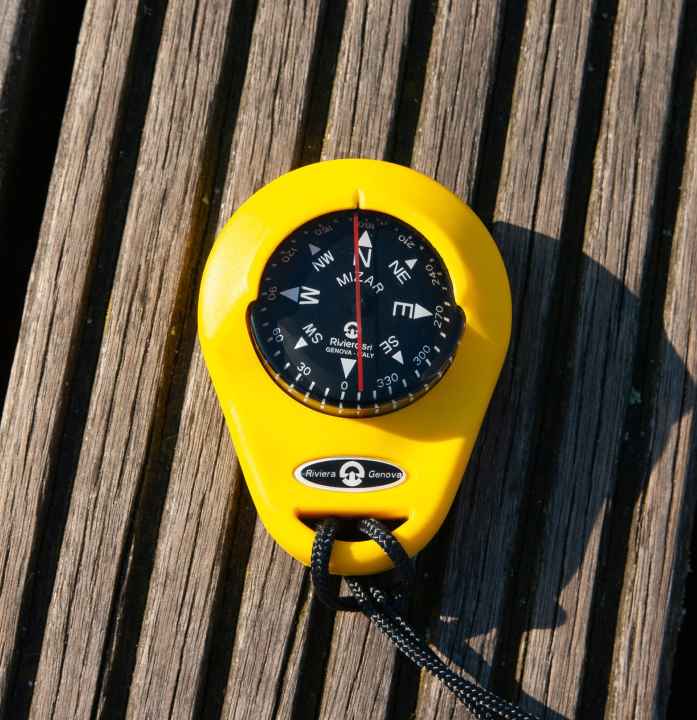
Properties
Very light and small
Most favourably priced product in the test
Only readable in certain positions
Long settling time
Inaccurate degree scale
Poor bearing accuracy
Lack of lighting
- Manufacturer: www.rivieragenova.it
SILVA 70 UNE
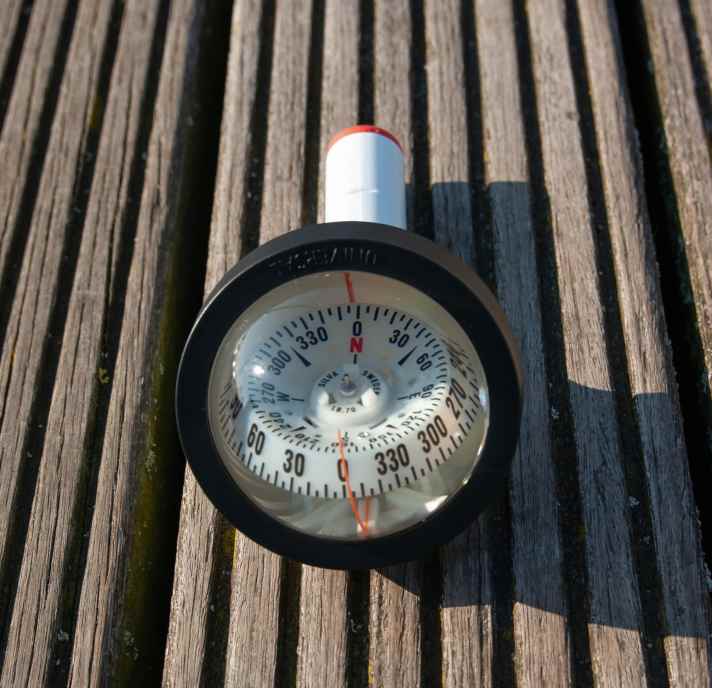
Properties
Can also be used as a steering compass
Solid design
Bright red light
Good damping
Clearly offset increments
Limited bearing accuracy
Dipstick difficult to recognise with lighting
- Manufacturer: www.silvasweden.com
VION AXIUM 3
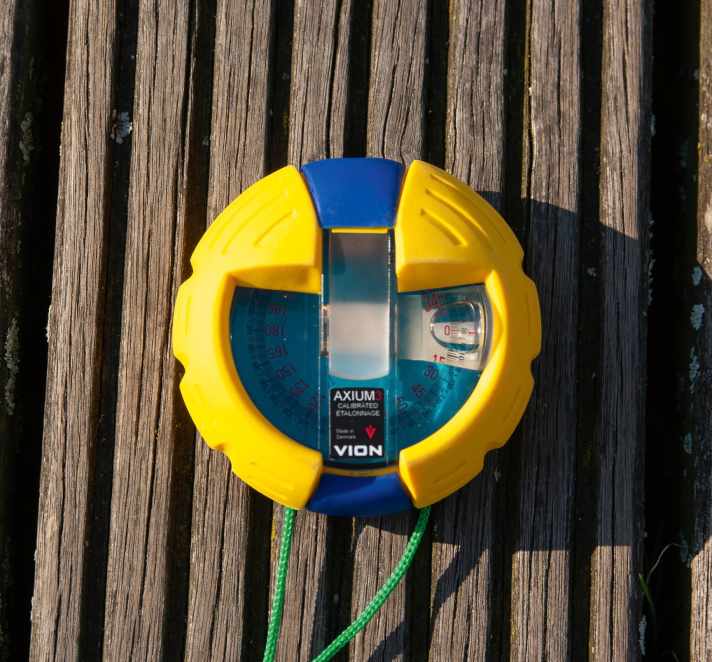
Properties
Alternately coloured degree values
Easy to read
Good damping
High-quality design
Useful lighting
Missing bearing line
Quite high price for performance
- Manufacturer: www.delite.dk
VION AX 2000
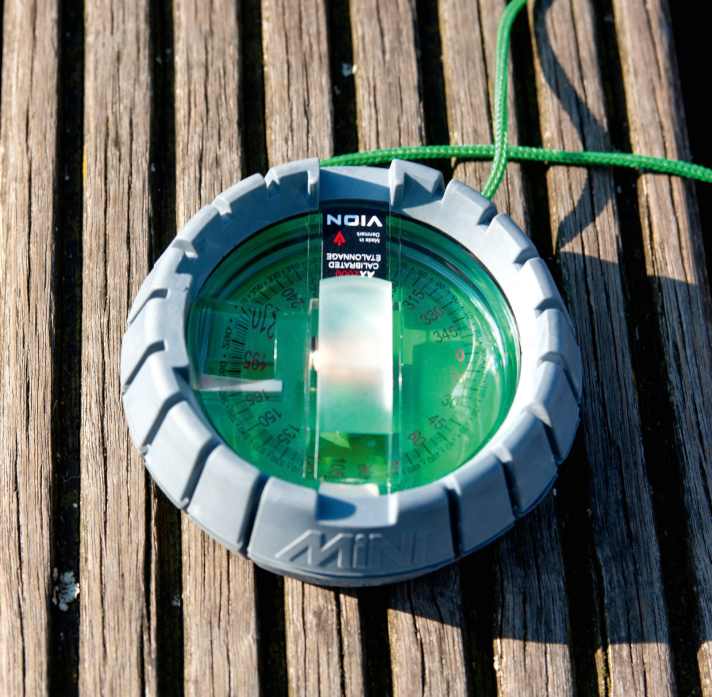
Properties
Alternately coloured degree values
Easy to read with very clear display
Very good damping
Very well protected
High-quality design
Useful lighting
Missing bearing line
- Manufacturer: www.delite.dk
Our conclusion
The hand bearing compasses tested do not have to be the last word in wisdom. There are also steering compasses on the market that are equally suitable for taking bearings. A prime example is the fully gimballed Sigma flat compass from Cassens & Plath, for which there is even a suitable bearing attachment with sighting device as an accessory. However, such designs are not suitable for every installation situation on every yacht.
With regard to the compass, the same quality criteria ultimately apply here as for stand-alone hand-held direction finding compasses. We used a Steiner Commander V for comparison in our test, but its compass did not deliver better results than the top products among the test candidates.
The portable spherical compasses are particularly interesting for small boats, where they can be used as a steering compass, for example mounted on the bulkhead, using a bracket that is usually supplied. There is no clear winner among the test candidates, although the Silva product appears to be slightly better damped and easier to read.
More accurate results can be achieved with high-quality flat bearing compasses. Among the test candidates, the Iris 50 from Plastimo and the Vion products are clearly in the lead. They combine excellent readability with good damping, high accuracy and an extremely robust design.
In terms of quality, the Vion AX 2000 takes the top spot, while the Plastimo Iris 50 scores highly in terms of practicality and is particularly easy to handle. Added to this is its convincing price-performance ratio. In the end, therefore, both achieve the highest score and emerge as the winners of the comparison.

